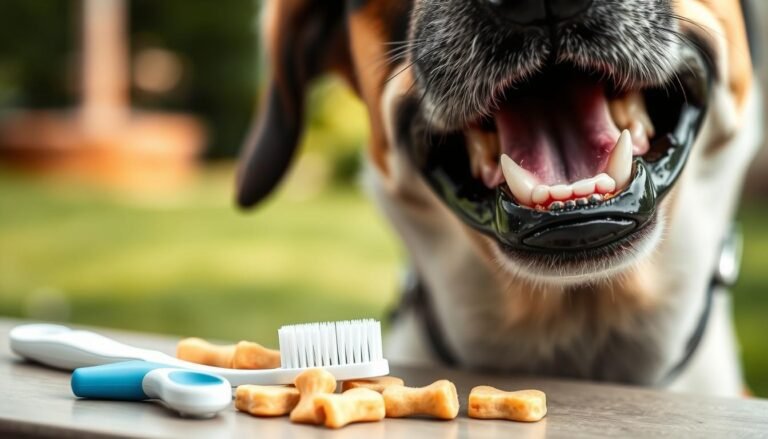Have we ever wondered how to effectively toilet train a puppy in just one week? It might sound daunting, but with a little patience, consistency, and some tried-and-true methods, we can accomplish this task together. This journey is often filled with excitement and challenges, but it can also be rewarding as our new furry friend learns where to go. In this guide, we’ll break down the process into manageable steps, giving us all the tools we need to ensure success.
Understanding The Basics of Toilet Training
Before we jump into the specific steps, let’s take a moment to understand the foundational principles of toilet training puppies. Puppies are like little sponges, eager to learn, but they need our guidance to understand what we expect from them.
The Importance of Timing
Puppies have small bladders and immature bladder control. Generally speaking, they can only hold it for about one hour for every month of age. Understanding this helps us set realistic schedules and expectations. For example, a two-month-old puppy can hold it for roughly two hours.
Creating A Routine
Establishing a consistent routine is essential. Puppies thrive on repetition and predictability. We need to take our puppy outside frequently, especially after meals, naps, and play sessions.
Day 1: Establishing the Routine
On the first day, we should focus on setting up a solid routine that will prime our puppy for success.
Setting Up A Designated Potty Area
First, let’s choose a specific outdoor spot for our puppy to do their business. This area should be consistent to help our puppy associate it with toilet time.
If we have a yard, this might be a specific corner; otherwise, we can use a nearby patch of grass. We can focus on using the same space each time, which reinforces where they are expected to go.
Introducing The Command
As we take our puppy outside, we can introduce a verbal command. A simple phrase like “Go potty” used consistently while they are in their designated area will help them connect the action with the command.
This association is key to teaching them when and where to relieve themselves.
Frequent Potty Breaks
To begin, we should take our puppy outside every hour and immediately after any significant events, such as meals and naps. This frequent approach not only decreases the chances of accidents indoors but also encourages them to recognize when they need to go.
Day 2: Observing and Learning
After successfully establishing a routine on Day 1, we now need to observe our puppy’s behavior closely.
Recognizing Signs of Need
Let’s familiarize ourselves with common signs that our puppy needs to go out. Some indicators might include:
- Sniffing the ground
- Circling
- Whining
- Sudden bursts of activity or excitement
By paying close attention to these cues, we can lead our puppy outside before accidents happen.
Reinforcing Positive Behavior
Whenever our puppy successfully relieves themselves outside, let’s offer enthusiastic praise! Whether it’s through verbal encouragement or treats, positive reinforcement is vital for reinforcing good behavior.
Consistency here helps our puppy understand that going outside is the right thing to do.
Day 3: Gradual Independence
Having set the expectations for our puppy, we can start allowing them a little more independence on Day 3.
Monitoring Freedom Inside
While it’s essential to offer potty breaks, we can begin allowing our puppy some supervised time in rooms where we can watch for signs they need to go. By keeping an eye on them, we can help prevent accidents while giving them some space to explore.
Using A Crate
If we haven’t already begun crate training, now is an excellent time to introduce it. A crate provides our puppy with a safe space and encourages them to hold it while they’re inside.
Puppies typically avoid soiling their resting spaces, making the crate a valuable tool in our potty training journey.
Day 4: Adjusting Our Approach
As we continue our training, by Day 4, we might need to adjust our methods based on how well our puppy is adapting.
Assessing Accidents
If accidents occur, it’s essential we don’t scold our puppy. Instead, let’s assess the situation: Were we following the routine closely? Did we read their signs accurately?
Understanding why accidents happen can help us improve our approach.
Extending Time Between Breaks
If our puppy successfully goes outside each time, we might cautiously begin extending the time between potty breaks. Gradually extending the interval by 15 minutes can help us assess their ability to hold it longer.
Day 5: Reinforcement and Patience
As we progress into Day 5, enhancing our training plan through reinforcement and patience becomes crucial.
Consistency is Key
Let’s stay vigilant with our training methodology. Consistency should remain our mantra. Each successful trip outside reinforces both the behavior and the bond we build with our puppy.
Training Sessions
Incorporating short training sessions can help us teach additional commands while our puppy learns to potty outside. Simple commands such as “sit” or “stay” can be useful, providing mental stimulation and enhancing our communication.
Day 6: Moving Towards Reliability
On Day 6, we’ll work towards increasing the reliability of our puppy’s potty habits.
Fewer Accidents, More Confidence
If we’ve been consistent, we should begin to notice fewer accidents. This is a great indicator that our puppy is starting to understand what we expect. Each successful outdoor trip helps build their confidence.
Establishing Nighttime Routines
At this stage, we may want to evaluate our nighttime strategy. Puppies often need a bathroom break during the night, especially when they are young. We may set a schedule that includes taking them out just before bedtime, and then once or twice during the night if necessary.
Day 7: Celebrating Success
On our final day, we’ll celebrate our progress and solidify our puppy’s training.
Acknowledging Achievements
By this point, our puppy may be regularly going outside and having fewer accidents indoors. We should applaud this achievement! Not only have we accomplished our goal, but we’ve also strengthened the bond with our new furry family member.
Final Touches
Let’s reinforce the routines established over the last week. With consistent practice, our puppy should understand and become more confident in their potty habits.
Troubleshooting Common Issues
Even with our best efforts, sometimes things don’t go perfectly. Here, we’ve identified a few common issues we might encounter during the training process and how we can address them.
Regressing or Backtracking
If our puppy has some accidents despite consistent training, it’s possible they’re simply still learning. We can go back to our initial frequent potty breaks and gradually get back into the routine, encouraging positive reinforcement whenever they succeed.
Fear of Going Outside
Some puppies may show anxiety about going outside, especially if they are suddenly exposed to new sights and sounds. We should work to create a positive association with going outside through treats and praise. Gradually easing them into these experiences can help alleviate anxiety.
Age and Breed Considerations
Older puppies may have more established habits, while some breeds may take longer to train than others. Understanding this can help us adjust our expectations accordingly and remain patient with our furry friends.
Helpful Tools and Resources
We can enhance our training process with some additional tools and resources. Here’s a list of useful items to assist with potty training:
| Tool/Resource | Purpose |
|---|---|
| Training Pads | Helpful for indoor training in emergencies. |
| Treats | Positive reinforcement for successful trips outside. |
| Crate | Provides a safe space and encourages bladder control. |
| Puppy Training Books | Offers a wealth of knowledge and troubleshooting tips. |
| Cleaning Supplies | Essential for cleanup in cases of accidents. |
Final Thoughts
Toilet training a puppy in just seven days is an ambitious goal, but with our commitment, patience, and love, we can make it happen. Throughout this week, we’ll establish routines, reinforce positive behavior, and ultimately strengthen the bond with our new companion.
Our journey doesn’t end after these seven days; consistency in our training methods will lead to long-term success. By understanding our puppy’s needs and adjusting our approaches, we can make this experience enjoyable for both them and ourselves.
Happy training, and may our homes be accident-free!





